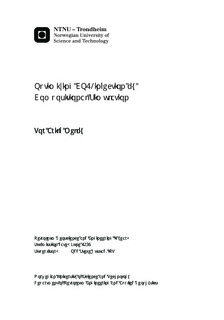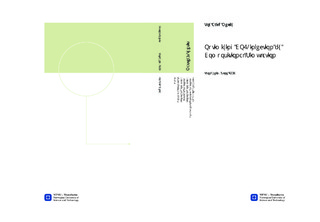| dc.description.abstract | Reservoir simulation is used to predict flow of fluids through porous media.The purpose is to get an insight into how the reservoir performs by for exam-ple employing certain injection methods and/or modelling options in order tooptimize investment decisions. In this thesis reservoir simulation is used asa tool to aid in the process of simulating hysteresis in one of Statoil's fieldmodels. Hysteresis affects the pattern of fluid flow in the reservoir. In orderto optimize oil prediction this phenomena is studied. Hysteresis is seldomemployed in field models due to its complexity and requirement of computa-tional resources. However, it is an important phenomena which causes changein saturation direction and trapping of fluid phases. Water-alternating-gas in-jection (WAG) is a method causing rapid changes in saturation direction, butin this thesis CO2-injection has been the main focus.In order to employ hysteresis to the field model, new relative permeability-and capillary pressure curves were made based on experimental data. Coreycorrelation was used to make gas-oil and water-oil relative permeability curvesfor the 5 different rock types in the model. Only kr hysteresis was studieddue to the fact that enabling capillary pressure caused too many problems forthe simulator. Eclipse300 was the selected simulation tool used to simulatethe different two-phase hysteresis models available; Carlson's-, Killough's- andJargon's methods. Carlson's method gave the most optimistic oil predictionswhile Killough's method gave the least. Jargon's method proved to be theleast computational heavy method. However, what all the methods had incommon was that a bigger saturation of gas was left in the reservoir comparedwith the case of no hysteresis selected. A comparison between the differentinjection methods are also given, where simultaneous water and gas injectionproved to be the most cost efficient in terms of oil volumes produced ver-sus the amount of CO2 injected. Injecting at different BHPs was tested tosimulate immiscible- and miscible CO2 behavior. An increase in numericalinstabilities was observed when BHP was set to miscible conditions, causingsevere inconsistencies in calculated relative permeability curves, ultimatelyresulting in non-physical behavior of the fluid flow.Lastly, a sensitivity analysis of the three-phase models was done, includ-ing ODD3P. The ODD3P model predicts less ultimate oil recovery comparedto the traditional models, even though it extends the three-phase saturationrange. However, an increase in oil prediction was observed pre-injection. Thisis due to a different table input and a different way of handling saturationchanges, compared to the traditional models. Based on earlier published re-sults done on WAG simulations comparing experimental data with numerical(hysteresis- and non-hysteresis) models[23], the IKU3P model, which ODD3Pis an extension of, gave the closest match to the experimental data. Basedon this the ODD3P model possibly estimates a more realistic oil predictioncompared to the traditional models. | nb_NO |

